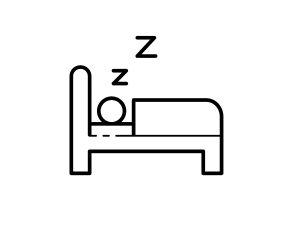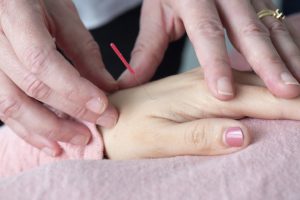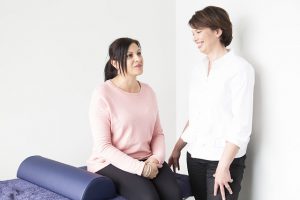What is Endometriosis?
Endometriosis can be a hugely debilitating chronic condition and there are many women suffering with it. It is very common, affecting 11.4% of women in Australia. It is a disease in which tissue similar to the endometrial lining is found outside of the uterus in other parts of the body. It is commonly found in the pelvic cavity including ovaries, intestine and bladders. In some case, it has been found in muscles, joints, lungs, and brain.
Who can be affected by Endometriosis?
Endometriosis can affect all women during their reproductive age, from 11-50 years old.
What are the symptoms of Endometriosis?

Endometriosis is a whole body disease. In fact, one of the most common symptoms of endometriosis is:
- fatigue – affecting 96% of the women.
Other common symptoms are:
- Pain during ovulation, menstruation, heavy bleeding, irregular menstruation.
- Pain during sexual intercourse, bowel movement.
- Infertility.
- Bloating, constipation, nausea.
Endometriosis and Mental Health.
Endometriosis isn’t just physical. It can have a massive effect on the mental and emotional health of the women living with it. The correlation between endometriosis and conditions such as anxiety and depression is being researched constantly.
An analysis including almost 100,000 women, illustrated higher levels of depression among women with endometriosis compared to women unaffected. Endometriosis can lead to a decrease in quality of life and mental health difficulties.
Although it is not often offered, it would be helpful for women with endometriosis to receive psychological support. If you feel it would be helpful for you, ask you doctor for a referral.
How is Endometriosis diagnosed?
The diagnosis of endometriosis is often delayed. Research has shown that 58% of women with endometriosis have to visit a doctor more than 10 times before diagnosis!
Sometimes doctors suggest the diagnosis of endometriosis just by signs and symptoms and palpation on the pelvic area. However, the only way to 100% confirm endometriosis is through laparoscopy. Laparoscopy is a surgical procedure where a telescope is put into the belly button to allow the doctor to see inside the abdomen. Laparoscopy is an invasive procedure and therefore it should be carefully considered.
How is Endometriosis treated?
The most common ways of treating endometriosis are:
- Pain relief medication.
- Hormonal medication.
- Laparoscopy or abdominal surgery to remove the abnormal growth of lining.
- Hysterectomy to remove the uterus in severe cases of endometriosis.
How can acupuncture help with Endometriosis?

Acupuncture and Chinese herbal medicine can soothe symptoms, remove blockages and bring the mind and body back into balance. It can improve your energy levels and support with pain relief and other symptoms.
Chinese Medicine practitioners have a different way of treating women with endometriosis, it is much more holistic and always tailored to individuals’ need. Chinese Medicine diagnosis and treatment are focused on finding the core problem, which is different for everyone. It is a completely different approach to Western Medicine. We go a step further then just trying to get rid of your symptoms. We will actually work on the root of your problem and stimulate your body so that it can start a self healing process.
What are some self-help remedies for Endometriosis?
Finding your own ways of supporting your health and wellbeing if you’re living with endometriosis is very important. Here are a few suggestions that you can use to support yourself:
- Eat an Anti-inflammatory Diet — Endometriosis is considered a chronic inflammatory condition and our hormones are easily influenced by the food we eat.
- Food to avoid: fried and processed food, fast food, gluten, caffeine, alcohol.
- Food to eat: fruit and vegetables, iron-rich food such as dark leafy greens and beans.
- Heat – Use a heat pack on your abdomen. It can help to relax muscles cramping and promote blood flow to the uterus and will make you feel better.
- Magnesium – Magnesium is well known for relaxing muscle cramping. Using magnesium topically allows the muscle to absorb the magnesium directly. You can use magnesium spray and apply it on your tummy or add magnesium into your bath tub.
- Herbal Tea – Turmeric, chamomile, peppermint, ginger, lavender and raspberry leaf have shown to be beneficial for management for Endometriosis symptoms.
- Moderate exercise – Long time sitting or standing impedes the circulation in the body. It is recommended to have 15 minute walk twice a day to help circulation flowing smoothly in the body. Many women also find yoga and gentle stretching beneficial.
How do we help you manage your endometriosis at Natural Solutions Acupuncture?
 As with any chronic condition, it is important to not go through it alone. Gather a team of trusted health professionals around you that can help you manage your illness and improve the quality of your life. At Natural Solutions Acupuncture we offer a personalised, natural approach to endometriosis which is a great addition to your care plan.
As with any chronic condition, it is important to not go through it alone. Gather a team of trusted health professionals around you that can help you manage your illness and improve the quality of your life. At Natural Solutions Acupuncture we offer a personalised, natural approach to endometriosis which is a great addition to your care plan.
In your initial session we take the time to get to know you and your body and you will be given a diagnosis and treatment plan. That’s where the road to your recovery starts.
Send us a message if you’d like more information or if you’d like to make a booking you can do so here.

